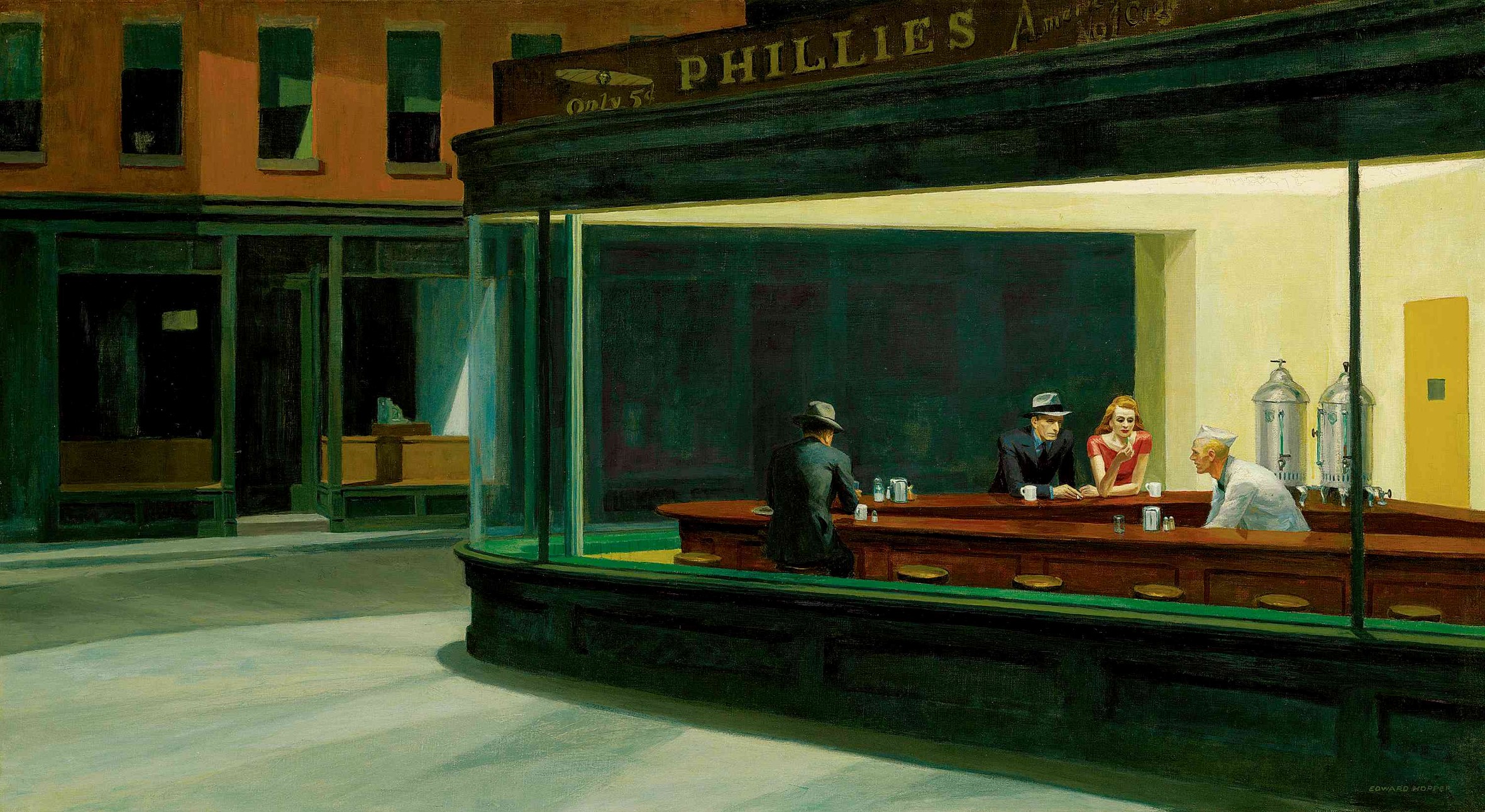Jeremiah Moss's diner of broken dreams
 Monday, July 5, 2010 at 04:13PM
Monday, July 5, 2010 at 04:13PM 
You've seen this picture a zillion times. It's Edward Hopper's famous painting, "Nighthawks," and for decades it has been held up as the perfect depiction of the empty alienation of the city. It's been endlessly rippied off and parodied, but the original 1942 painting -- ostensibly of a Greenwich Village diner -- retains its emotional original power.
So does it matter, then, that it turns out the diner never existed? In an op-ed in today's New York Times, blogger Jeremiah Moss traces his obsession with figuring out just where the diner that Hopper painted was located. After he followed various leads into one dead end after another, he eventually learns that Hopper himself admitted the diner was a composite of sorts, of a small coffee shop he knew that he made "more so" and "simplified", in order to distill the essential portrait of "the loneliness of a large city".
This discovery comes close to breaking Moss's heart. As he puts it in terms evoking the tragedies of gentrification, it "feels like yet another terrible demolition, though no bricks have fallen."
This is in many ways the painterly equivalent to the story that opens chapter three of The Authenticity Hoax, about the discovery in Toronto of the home of Joseph Wagenbach, a reclusive German artist who died and left behind a house that was full of wistful and nostalgic objects d'art. Except he didn't, since the whole thing was an elaborate ruse by the artist Iris Haussler, a ruse designed to pump our intuitions about why we care so much about the provenance of a work of art. Why does the artist's background matter so much to us? Or in Hopper's case, why do we care so much about whether the diner actually existed or not?
The answer, I think, is that we misunderstand the nature of nostalgia. When we indulge in nostalgia, we think that we are hearkening back to a time that was simpler, more innocent, less corrupted and compromised by the daily grind. Moss is concerned mostly with gentrification and what he himself describes as "a bitterly nostalgic look" at a city that is going extinct. When it comes to "Nighthawks", the fact that the diner never existed seems to create in Moss something close to a syllogistic crisis: The painting was supposed to capture an authentic sense of the Gotham's loneliness, but also its bleak existential purity. But if the painting was of a scene that is essentially a fiction, then aren't those emotions also fictitious, QED?
This is, once again, the pernicious effects of the authenticity hoax at work. Why should the value of the emotions be dependent on the reality of the diner? Does its newly discovered status as a composite character undermine the nostalgia that Moss feels?
Perhaps it should. After all, the New York for which he is bitterly nostalgic never really existed, as a healthy read of a book like Luc Sante's Low Life will attest. New York has always been a millstone of the past -- the lack of sentimentality is the essence of the city. Moss's nostalgia, as always, is nostalgia not for the past but for the present: It is the manifestation of present disquiet or unhappiness, with the solution projected back in time into a past that never existed. If anything, that's the message of Edward Hopper's painting, which is why the discovery of its mashed-up provenance is a revelation, not a tragedy.
 edward hopper,
edward hopper,  jeremiah moss,
jeremiah moss,  nighthawks
nighthawks 